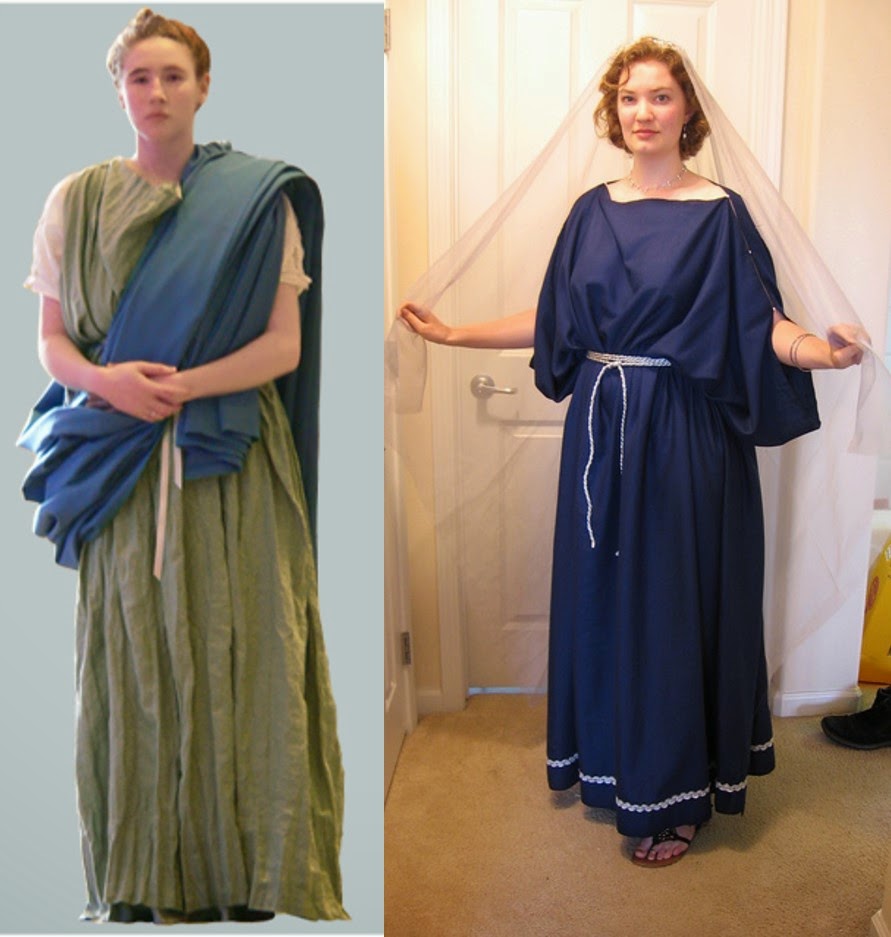Stola
The stola was the traditional garment of Roman women, corresponding to the toga, or the pallium, that was worn by men. The stola was made of linen.
Originally, women wore togas as well, but after the 2nd century BC, the toga was worn exclusively by men, and women were expected to wear the stola. At that point, it was considered disgraceful for a woman to wear a toga; wearing the male garment was associated with prostitution and adultery.
Description
The stola was a long, pleated dress, worn over an undergarment called a tunic or tunica intima (the Roman version of a slip). The stola was generally sleeveless but versions of it did have short or long sleeves. These sleeves could belong to the stola itself or be a part of the tunic.
The traditional sleeveless stola was fastened by clasps at the shoulder called fibulae. The stola was typically girt with ribbons, and typically had two belts. The first was worn just below the breasts creating a great number of folds. The second and wider belt was worn around the waist.
Stolas were generally made of fabrics like linen or wool, but a wealthy woman could be seen wearing a stola made of silk. The stola was worn as a symbol and represented a woman's marital status.
Stolas were made in a variety of colors including red, yellow, and blue. Decorations were also added to the neckline and hem. For common women, these would be a simple band of color or pattern. For wealthier women, more details and embellishments were used. A wide ornamental border called an instita was often used around the neckline and hem as a display of wealth.




EmoticonEmoticon